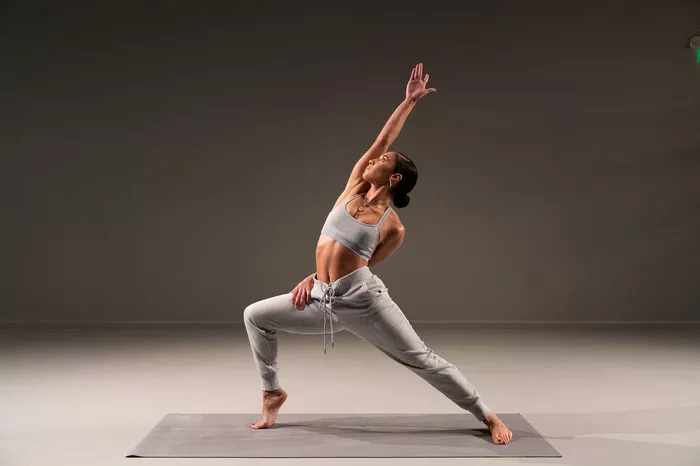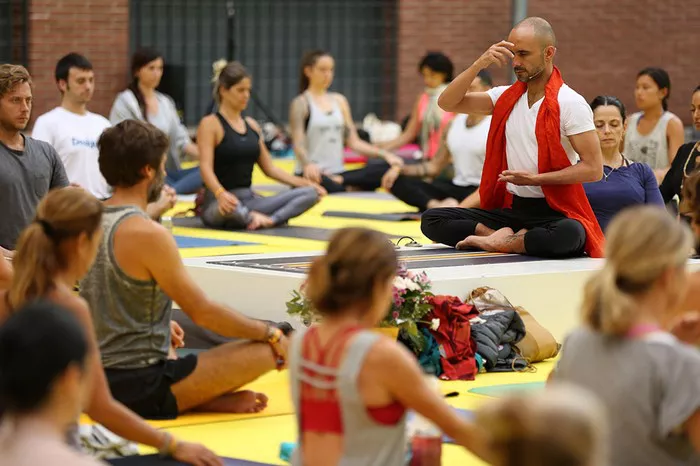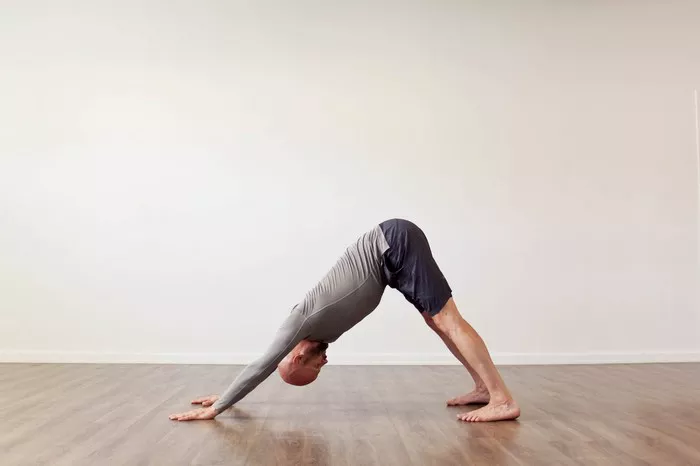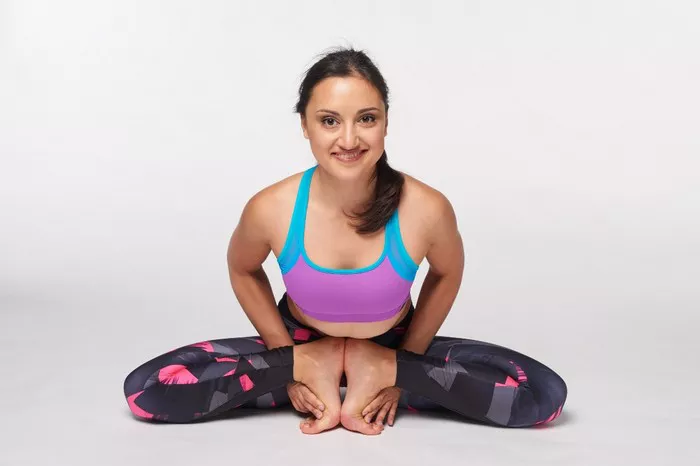Yoga, an ancient practice rooted in mindfulness, breath control, and physical postures, has earned a global reputation for enhancing both mental and physical well-being. Among the many yoga asanas (postures) that practitioners can adopt, the Seated Spinal Twist, also known as Ardha Matsyendrasana in Sanskrit, is particularly effective in promoting flexibility, balance, and relaxation. This seated twist involves the spine’s rotation and provides deep benefits for various parts of the body.
In this article, we will explore the benefits of Seated Spinal Twist Yoga, highlighting its physical, mental, and emotional advantages. Whether you are an experienced yogi or just beginning your yoga journey, this pose can become a valuable part of your practice. Let’s take a closer look at how this asana contributes to holistic well-being.
Enhances Spinal Flexibility
One of the most obvious benefits of the Seated Spinal Twist is its ability to enhance spinal flexibility. The twisting motion helps to stretch and lengthen the spine, particularly in the thoracic and lumbar regions. With consistent practice, it can improve the flexibility and mobility of the spine, which is crucial for maintaining proper posture and preventing back pain.
As we age, the spine naturally becomes less flexible, which can lead to stiffness and discomfort. By regularly practicing the Seated Spinal Twist, you can help maintain or even increase the flexibility of the spine, ensuring that you stay agile and free from tension. The twisting motion targets the muscles surrounding the vertebrae, promoting their elasticity and helping to keep the spine’s range of motion wide and fluid.
Improves Posture
Good posture is foundational for overall health, yet modern lifestyles—sitting at desks, using computers, and spending extended hours in front of screens—often encourage poor alignment of the spine. The Seated Spinal Twist counteracts these habits by lengthening and straightening the spine, which helps improve posture.
When practicing this asana, the focus is on elongating the spine while simultaneously rotating it. This action helps to stretch the muscles that may have tightened due to poor posture and strengthens those responsible for maintaining proper alignment. With continued practice, you may notice improvements in your everyday posture, reducing the likelihood of experiencing discomfort due to misalignment.
Stretches and Strengthens the Back and Core
The Seated Spinal Twist is an excellent exercise for strengthening the back muscles, especially those in the upper back, shoulders, and lower back. When you twist, you engage the muscles along your spine, including the erector spinae, which is responsible for maintaining posture. The muscles of the core, including the abdominals and obliques, are also activated as they stabilize the torso and allow for the twist to occur.
The stretching and strengthening of these muscle groups contribute to better overall spinal health, preventing the weakening of the back and core that often leads to injury. In addition, a strong core plays a significant role in improving balance, coordination, and overall body strength.
Relieves Lower Back Pain
For those who suffer from chronic lower back pain, the Seated Spinal Twist can provide relief. By gently stretching and twisting the spine, this posture can alleviate tension in the lower back muscles and improve circulation to the affected areas.
The seated nature of this twist also makes it accessible to individuals who may have limited mobility or those who are new to yoga. With the proper modifications, such as using props or adjusting the intensity of the twist, people with lower back discomfort can safely practice this asana and experience its therapeutic benefits.
Stimulates Digestion
The Seated Spinal Twist is a powerful pose for stimulating the digestive system. The twist compresses the abdominal organs and massages the digestive tract, promoting the flow of energy and enhancing the efficiency of digestion. This gentle pressure can stimulate the intestines, encouraging better peristalsis (the contraction and relaxation of the muscles in the intestines) and aiding in the elimination of toxins.
Incorporating Seated Spinal Twists into your practice can also help with symptoms of bloating, constipation, or indigestion. By facilitating the movement of food and waste through the digestive system, this asana can promote regularity and comfort.
Detoxifies the Body
Twisting poses like the Seated Spinal Twist have a natural detoxifying effect on the body. The rotation of the spine creates compression in the abdominal region, which helps to flush out toxins stored in the organs. When the body is twisted and then untwisted, it allows fresh, oxygenated blood to flow into the organs, promoting circulation and aiding in the removal of waste products.
The process of detoxification is essential for maintaining overall health and well-being. By practicing the Seated Spinal Twist regularly, you support the body’s natural detox mechanisms, enhancing the body’s ability to cleanse itself and stay balanced.
Increases Circulation and Blood Flow
Another key benefit of the Seated Spinal Twist is that it increases circulation throughout the body. When you twist, you encourage blood to flow more freely to the spine, back muscles, and internal organs. As the muscles of the body contract and release during the twist, it promotes better blood circulation, ensuring that oxygen and nutrients are delivered to various tissues, while waste products are efficiently removed.
This boost in circulation also extends to the brain. Increased blood flow to the brain improves cognitive function and mental clarity, contributing to a feeling of mental alertness and focus after practicing the pose.
Relieves Stress and Tension
Like many yoga poses, the Seated Spinal Twist is an excellent tool for stress reduction. The deep twisting motion provides a physical release of tension in the back, neck, and shoulders, which are common areas where stress is stored. As the body stretches and twists, it helps to open up tight muscles and release pent-up energy, allowing the practitioner to feel more relaxed and at ease.
In addition to the physical release, the focused breathing required in this pose encourages a mindful approach to relaxation. When you concentrate on your breath and the movement of your body, it calms the nervous system, helping to reduce anxiety and stress.
Boosts Energy and Mental Clarity
Despite its calm and restorative nature, the Seated Spinal Twist can provide a significant energy boost. The stimulation of circulation and the release of tension result in a refreshed, invigorated feeling after practicing this asana. The increased blood flow to the brain enhances mental clarity and focus, helping to clear mental fog and increase productivity.
By engaging in the Seated Spinal Twist regularly, you can foster a sense of mental vitality and rejuvenation, making it a great practice to incorporate into your morning routine to start the day with energy and purpose.
Supports Emotional Release and Mental Well-being
Yoga is not only about the body—it is also about the mind and spirit. The Seated Spinal Twist can be especially helpful in releasing emotional tension stored in the body. Like many other twisting poses, it helps to create a sense of emotional liberation by allowing energy to flow freely through the body and mind.
By helping to release physical tension, the Seated Spinal Twist encourages a corresponding emotional release. Practitioners often experience a sense of relief or lightness after performing the twist, as if emotional weight has been lifted. This release of emotional tension is particularly valuable for those dealing with stress, anxiety, or unresolved emotional experiences.
Improves Balance and Coordination
The Seated Spinal Twist engages both the upper and lower body, helping to improve balance and coordination. The pose requires the practitioner to maintain a strong, stable foundation while twisting the spine and balancing the torso. This action enhances the body’s proprioception (awareness of its position in space), which is essential for maintaining stability and control in everyday activities.
As you continue to practice, you may notice improvements in your balance and coordination, which can translate to better performance in other areas of yoga or physical activities.
Promotes Relaxation and Mindfulness
Finally, the Seated Spinal Twist offers an opportunity for deep relaxation and mindfulness. While this pose engages the body physically, it also provides a chance for inner stillness and reflection. The mindful attention to breath and body awareness during the twist creates a meditative experience, which is key to achieving mental calmness and clarity.
Through the regular practice of the Seated Spinal Twist, you can cultivate a deeper sense of presence and mindfulness in your yoga practice and daily life.
Conclusion
The Seated Spinal Twist is a powerful and accessible yoga posture that offers numerous physical, mental, and emotional benefits. From improving spinal flexibility and posture to stimulating digestion and relieving stress, this asana provides a full-body experience that enhances overall well-being. By integrating Seated Spinal Twists into your regular yoga practice, you can enjoy the many advantages of this versatile pose, promoting balance, health, and vitality both on and off the mat.
Remember to approach the Seated Spinal Twist with awareness and care, especially if you are new to yoga or have any existing injuries. Practicing with mindfulness and maintaining good alignment will help you achieve the best results while preventing any discomfort or strain. Over time, this humble yet powerful asana will become a valuable tool in your yoga practice, contributing to a stronger, more balanced, and more peaceful life.
Related topics:























